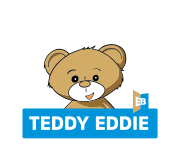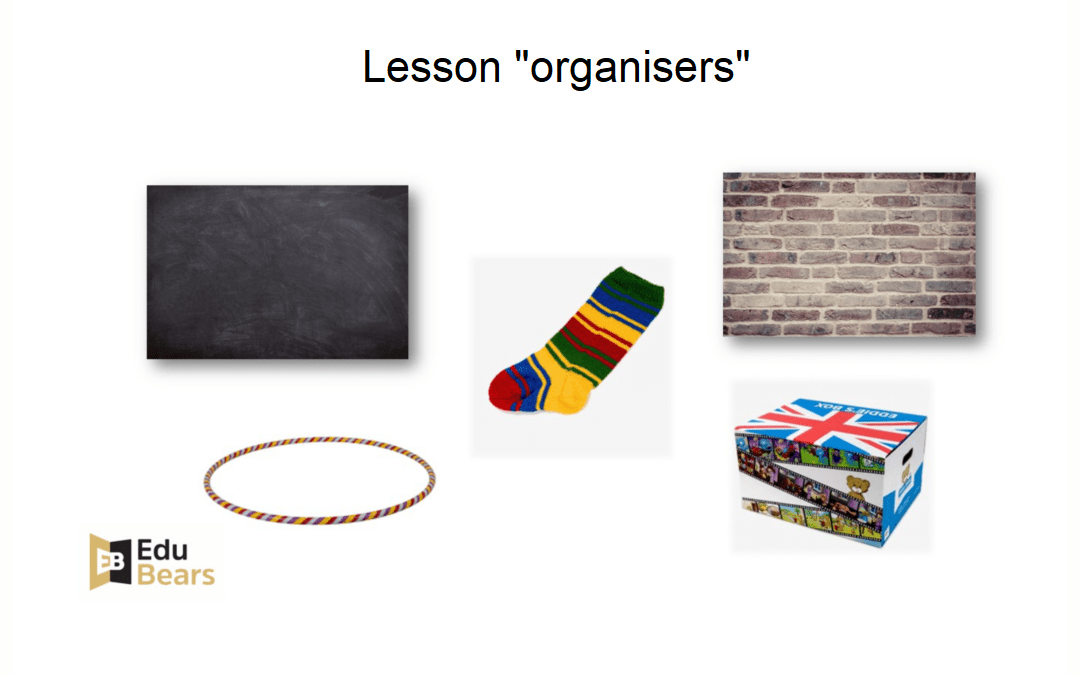It may not be a very neat name, but I promise that if you have a few of them in your ESL classes, it will certainly make your work with pre-schoolers easier.
It has been known for a long time that during lessons with toddlers we should interweave static activities and exercises with dynamic ones. This way, we have a better chance of getting our small students involved in the lesson because then we are stimulating both hemispheres of their brains to work, and the learning process is more effective. However, it has also been known for a long time that sometimes, after doing several dynamic exercises in a row, it is difficult to bring the children to order and focus on something more static and calm. This is exactly where “organisers” come in handy. We use them between activities in the classroom to clearly indicate that the last activity is over and to prepare the kids for the next one. Here are four elements which can be great “lesson organisers.” I would like to encourage you to share your own ideas and opinions!
A wall
If we have an empty wall available in the classroom, it is good to teach young students such commands as “Stand in a line!” or “Stick to the wall!” between activities. It helps to gather them in one place, and positioning them in a line prevents excessive interaction and the madness that may happen as a result!
A hula hoop
Especially recommended for the youngest groups, it helps you arrange children in a circle, gather them in one place, and even move the group to the other end of the room. The children stand around the hula hoop and hold it with one or two hands.
A board
In my opinion, this works perfectly for slightly older pre-schoolers, especially those who are just starting to read. You can write down all the lesson points on the board, and after each activity, the teacher and the children should go to the board and check or cross out what has just been done on the plan (this can be done by the teacher or a selected child). It’s great if the last point in the plan is a SURPRISE! (i.e. a favourite game / activity). This will work well especially if your children can read and understand this word. The board is also suitable for group evaluation of each exercise, e.g. after singing a song, the teacher draws a smiling face on the blackboard. If the kids weren’t singing very actively, or were fooling around instead of actively participating, the face might be sad or angry. We can always ask if they want to fix it (and they usually do). I used this with a group of 7-year-olds last year and the best moments were when they did something great and I drew them a big smiling face with hair and freckles – it really meant a lot to them!
A sock
Our Teddy Bear has his own sock in which kids can find a variety of things, e.g. some cards / flashcards, or the items that tell them a little bit about what they are going to do next in the lesson. For example, the children are focused on the sock and take a pencil and a crayon out of it, which means that they are going to learn a rhyme about these things. If you do not have a sock, give your class mascot a sack or backpack, from which you will bring out new aids, but remember that as a rule you shouldn’t take them out until the whole group is silent and focused around you.
A box
All the interesting things that you plan to use during the class should be hidden in the box, so that they do not distract the kids during the lesson. Between exercises, we are able to gather the kids in a circle on the carpet and, in an aura of mystery, peek into the box, taking out the next things we need. Watch out! The box should be placed out of reach of the children so that you don’t find yourself in the same situation that I had in my lesson recently: the box was in the middle of the room, the kids were slowly coming in and sitting down around it, I turned around for a moment and … when I looked back again, one child was already sitting on the box having fun with the teddy bear. Me and my 4-year-olds laughed so much!
Good luck controlling your group dynamics! This is very often the key to success in the classroom!
______________________________________________________________________________________________________________________________________________________________________________
The author of this post is Ola Komada – methodical director of Edu Bears, co-author of the Teddy Eddie method. A teacher by heart, well-experienced in work with young learners.


Ola, thank you! These are great ideas that really work in the class!